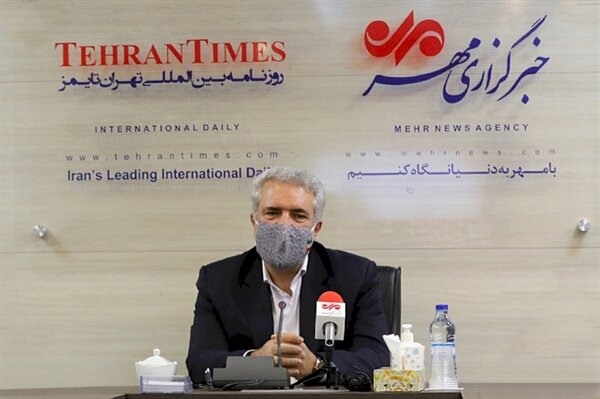By Afshin Majlesi
You can find, through the web or in person, countless travelers, who had developed mixed feelings about Iran prior to their arrivals ….. attitudes, stereotypes, and perceptions that totally being changed when excursions to the Islamic Republic starts.
You may possibly hear somewhat like: “Quite a different perspective!”; “Iran is not (at all) what I thought it’d be like!”; “I am impressed how the media shows a different picture”; “Contrary to popular belief, Iran is extremely safe, with the friendliest people I’ve ever met”; “When we think about Iran, we tend to only think of negative things”; or “I previously thought it was dangerous considering some of the Western news”.
So far, limited tourism research has drawn attention to the impact of media on citizens' attitudes, which form positive, negative, and neutral stereotypes about a country. However, conducting a scientific survey using standard questioners and methods can be a big help in that regard.
You may possibly hear somewhat like: “Quite a different perspective!”; “Iran is not (at all) what I thought it’d be like!”; “I am impressed how the media shows a different picture”; “Contrary to popular belief, Iran is extremely safe, with the friendliest people I’ve ever met”; “When we think about Iran, we tend to only think of negative things”; or “I previously thought it was dangerous considering some of the Western news”.
Many travel experts believe that Iran is still somehow “unknown” for many potential travelers across the globe due to such a “media war”. Others see better prospects for the tourism sector of the country if it can successfully implement strategies to counter U.S.-led propaganda and sanctions.
In this regard, the Tehran Times has put forward the issue with Cultural Heritage, Tourism, and Handicrafts Minister Ali-Asghar Mounesan, who paid a visit to the daily on October 3. Below are edited excerpts from a conversation with the minister:
Q: Many Western tourists, I talked to, or read their travelogues on various blogs and sites, say before they entered the country, they had a far different view of Iran and its people. Some of whom had received strong advice from relatives or friends saying not to go to Iran…. Now the question is how your ministry uses such a capacity to present the true face of the country to draw more potential travelers.
“This is absolutely true because one of the functions of tourism is to convey cultural messages and introduce a country and a nation… Our country is facing this problem due to the huge volume of negative propaganda campaign from arrogant powers,” Mounesan answered.
“These tarnished mental images are generally cultivated and influenced by some Western media with the roots of anti-Islamism and anti-Iran.”
“Some tourists had developed arrays of negative mindset, perception and stereotypes prior to their arrivals in the country, and many of whom leave the country with a completely positive attitude. Therefore, this is a very good capacity for our country, which the tourism industry plays well…. Any tourist who has a good experience of traveling to the country can encourage several others to visit the country. And this is a natural occurrence that exists everywhere in the world.”
“Specifically, in order to deal with the phenomenon of Iranophobia, it is needed to widely represent the real face of the country, and to realize that we need a sufficient advertising budget, which unfortunately we do not have due to the sanctions and budget deficit. However, we have not stopped and one of the things we have done is to identify famous social media figures or influencers… We have [already] brought many of whom to Iran on various tours.”
Mounesan added that his ministry sees influencers and popular figures as a source that could help modify the tarnished international image.
“We invited people who have a lot of followers in cyberspace because it is very difficult for us to communicate with all the tourists who have visited Iran…. And some of these tours have been organized by us, some by the private sector and sometimes through partnerships.”
Citing an example, he said after Iran invited a number of Chinese influencers, bloggers, and media personnel after it waived visas for the Chinese passport holders.
“For example, after Iran abolished visa rules for the Chinese, we did the same immediately and invited teams of Chinese news and famous figures to Iran, and we were continuing this process till we stopped by the corona pandemic.”
“Therefore, to improve the image, one of our activities is to invite media figures, cultural figures, and anyone from a target country who is considered a personality for a reason and has a large audience in cyberspace. Their travels lay the ground for them to closely feel the people, their customs, and culture to be able to share their travel feedback with their audiences.”
To cope with such a propaganda campaign, the minister said, “We recently prepared various diplomacy packages, including video clips, and distributed them to cultural attaches in Tehran’s embassies in different countries.”
“In this package, Iran seeks to portray its real face at international levels, and to correct tarnished images (often depicted by certain media outlets of the West)… it also aims to eliminate Iranophobia to strengthen the motivation to travel to Iran and increase the number of incoming tourists, which will be achieved through cross-sectoral cooperation under the provisions of a national strategic plan for tourism development.”
Iran’s tourism has developed an action plan to get the country’s travel back on track after the threat of novel coronavirus is over. The ancient land embraces hundreds of historical sites such as bazaars, museums, mosques, bridges, bathhouses, madrasas, mausoleums, churches, towers, and mansions, of which 22 being inscribed on the UNESCO World Heritage list. Under the 2025 Tourism Vision Plan, the country aims to increase the number of tourist arrivals from 4.8 million in 2014 to 20 million in 2025.
TAGS


No comments:
Post a Comment